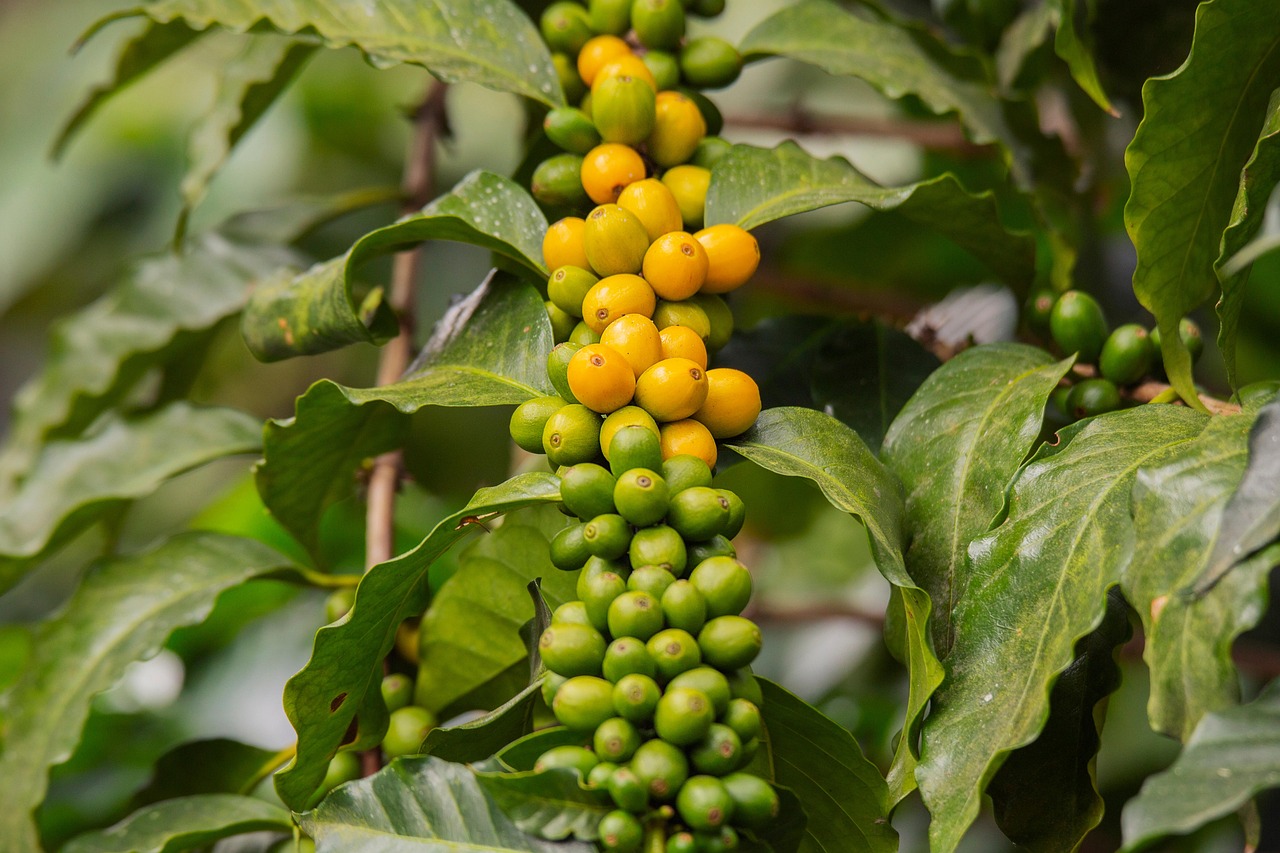The Kentucky Coffee Tree has a moderate growth rate, typically reaching heights of 50 to 60 feet and a spread of 30 to 40 feet. In urban landscaping, it can grow approximately 1 to 2 feet per year under optimal conditions.
Understanding the Kentucky Coffee Tree
The Kentucky Coffee Tree, scientifically known as Gymnocladus dioicus, is a deciduous tree native to the central and eastern United States. Its unique characteristics make it an attractive option for urban landscaping projects. This tree is particularly valued for its resilience and adaptability to various soil types and conditions.

In urban areas, trees play a crucial role in enhancing aesthetic appeal and providing environmental benefits. The Kentucky Coffee Tree offers shade, contributes to air quality, and supports local wildlife. Its tall stature and broad canopy make it an excellent choice for parks, streetscapes, and residential landscapes.
Growth Characteristics
The growth rate of the Kentucky Coffee Tree is classified as moderate when compared to other tree species. Here are some important features regarding its growth:
| Characteristic | Details |
|---|---|
| Height | 50 to 60 feet |
| Spread | 30 to 40 feet |
| Growth Rate | 1 to 2 feet per year |
| Life Span | Up to 150 years |
| Leaf Type | Pinnately compound leaves |
Optimal Conditions for Growth
To achieve healthy growth rates, the Kentucky Coffee Tree requires specific conditions. These include:

- Soil Type: Prefers well-drained soils but can tolerate clay and sandy soils.
- Sunlight: Thrives in full sun to partial shade, ensuring adequate light for optimal growth.
- Watering: Requires moderate watering, especially during dry periods, but is drought-tolerant once established.
- Climate: Adaptable to various climates but performs best in USDA hardiness zones 4-7.
Urban Landscaping Benefits
The Kentucky Coffee Tree is particularly well-suited for urban environments due to its numerous benefits. Here are some key advantages of incorporating this tree into urban landscaping:
- Shade Provision: With its expansive canopy, it provides shade that can help reduce urban heat and lower energy costs.
- Aesthetic Appeal: The tree’s unique bark and leaf structure add visual interest throughout the seasons.
- Wildlife Habitat: Supports various bird species and other wildlife, enhancing biodiversity in urban settings.
- Air Quality Improvement: Contributes to enhanced air quality by absorbing pollutants and producing oxygen.
Cultural Significance
The Kentucky Coffee Tree has historical significance as well. Native Americans utilized the seeds for food after processing them to remove toxins. The tree’s strong wood was also used in various applications, making it an important resource for early settlers.
In contemporary landscaping, the tree’s unique attributes continue to be appreciated. Its striking appearance and resilience make it a preferred choice among landscape designers and urban planners alike.

As cities continue to grow, incorporating trees like the Kentucky Coffee Tree will become increasingly important. It not only beautifies our urban landscapes but also provides essential ecological benefits that support healthier communities.
Planting and Maintenance of the Kentucky Coffee Tree
Successful growth of the Kentucky Coffee Tree in urban landscapes depends significantly on proper planting and maintenance practices. Understanding these practices can ensure the tree thrives, providing long-lasting benefits to the environment and community.
Best Practices for Planting
When planting a Kentucky Coffee Tree, several key steps should be followed:
- Selecting the Right Location: Choose a spot that receives full sun to partial shade. Ensure there is enough space for the tree to grow to its mature height and width.
- Soil Preparation: Test the soil for pH and nutrient levels. Amend the soil as necessary to ensure it is well-draining and rich in organic matter.
- Digging the Hole: Dig a hole that is at least twice as wide as the root ball but no deeper than the root ball’s height. This encourages lateral root growth.
- Planting: Place the tree in the center of the hole. Fill in around the root ball with soil, ensuring that the top of the root ball is level with the surrounding soil.
- Watering: Water thoroughly after planting. Keep the soil moist but not soggy during the first growing season to help establish roots.
Watering Requirements
The Kentucky Coffee Tree is relatively drought-tolerant once established, but young trees require consistent moisture. Here are some watering tips:

- During the first year, water deeply once a week unless there is significant rainfall.
- As the tree matures, reduce watering frequency. Monitor rainfall and adjust accordingly.
- Avoid overwatering, as this can lead to root rot.
Fertilization Needs
Fertilizing the Kentucky Coffee Tree can promote healthy growth. Consider these guidelines:
- Timing: Fertilize in early spring before new growth begins.
- Type: Use a balanced fertilizer with equal parts nitrogen, phosphorus, and potassium.
- Application: Follow package instructions for application rates based on tree size.
Pest and Disease Management
The Kentucky Coffee Tree is generally resistant to many pests and diseases. However, vigilance is essential. Common issues include:
Pests
- Scale Insects: These small pests can be removed by hand or treated with horticultural oil.
- Aphids: These can be controlled naturally by introducing beneficial insects like ladybugs.
Diseases
- Leaf Spot: This fungal disease appears as dark spots on leaves. Ensure good air circulation and avoid overhead watering to minimize risk.
- Canker: If cankers develop on branches, remove affected branches immediately to prevent spread.
Environmental Considerations
Planting Kentucky Coffee Trees in urban areas can have profound environmental impacts. Their ability to filter air pollutants contributes to a healthier atmosphere. Additionally, they provide habitat for various wildlife species.
The trees also help mitigate urban heat through shade, lowering temperatures in densely populated areas. This cooling effect can reduce energy consumption for air conditioning during hot months.
Soil Erosion Control
The extensive root system of the Kentucky Coffee Tree helps stabilize soil, reducing erosion in urban landscapes. This characteristic is particularly valuable in areas prone to heavy rainfall or poor drainage.
Choosing Kentucky Coffee Trees for Urban Areas
When selecting Kentucky Coffee Trees for urban landscaping projects, consider using native nursery stock when possible. Native trees are generally better adapted to local conditions and are more resilient against local pests and diseases.
Collaboration with local landscape architects can help ensure that these trees are placed strategically within urban environments. Proper placement will maximize their benefits while maintaining safety and accessibility for residents.
Overall, understanding the unique requirements and benefits of the Kentucky Coffee Tree can lead to successful integration into urban landscapes, thereby enhancing both ecological health and community well-being.
Landscape Design Considerations
Incorporating Kentucky Coffee Trees into urban landscaping requires thoughtful planning and design. Their unique growth characteristics and environmental benefits make them a valuable asset, but careful consideration is needed to maximize their potential.
Size and Spacing Requirements
Due to the Kentucky Coffee Tree’s mature height of 50 to 60 feet and spread of 30 to 40 feet, proper spacing is crucial. Here are some guidelines:
- Spacing from Other Trees: Space Kentucky Coffee Trees at least 30 feet apart from other large trees to prevent overcrowding and competition for resources.
- Distance from Structures: Plant trees at least 15 to 20 feet away from buildings and sidewalks to avoid damage from roots or falling branches.
- Group Plantings: Consider grouping several trees together for a more natural look and to create a more effective shade canopy.
Visual Appeal in Design
The Kentucky Coffee Tree’s distinctive features add visual interest throughout the seasons. Its large, compound leaves create a lush canopy in summer, while its unique bark offers texture throughout the year.
To enhance visual appeal, consider the following:
- Layered Planting: Use smaller shrubs and plants around the base of the tree to create layers and depth in the landscape.
- Seasonal Color: Incorporate flowering plants that bloom during different seasons to complement the Kentucky Coffee Tree’s foliage.
- Pathways and Seating Areas: Design pathways and seating areas that utilize the shade provided by the tree for comfort during hot days.
Environmental Benefits of Kentucky Coffee Trees
Integrating Kentucky Coffee Trees into urban landscapes offers numerous environmental advantages. Their presence contributes to a healthier ecosystem while enhancing community well-being.
Air Quality Improvement
The Kentucky Coffee Tree plays a significant role in improving air quality. It helps filter pollutants such as carbon dioxide, sulfur dioxide, and particulate matter. Here are some key facts:
- Trees absorb carbon dioxide during photosynthesis, reducing greenhouse gases in the atmosphere.
- Their leaves trap dust and other airborne particles, leading to cleaner air.
- They release oxygen, contributing to better air quality for urban residents.
Urban Heat Island Mitigation
Urban areas often experience higher temperatures than surrounding rural areas due to the urban heat island effect. The Kentucky Coffee Tree can help mitigate this effect:
- Shade Provision: The broad canopy provides shade, cooling nearby surfaces like sidewalks and buildings.
- Evapotranspiration: The process of water evaporation from leaves cools the air surrounding the tree, further reducing temperatures.
Wildlife Habitat Creation
The Kentucky Coffee Tree supports local wildlife, making it an important addition to urban landscapes. Its flowers and seeds provide food for various species:
Attracting Pollinators
The tree produces small, fragrant flowers that attract pollinators such as bees and butterflies. This is beneficial not only for the tree’s reproduction but also for overall biodiversity in urban environments.
Providing Shelter
The dense canopy of the Kentucky Coffee Tree offers shelter for birds and small mammals. The tree can serve as a nesting site for various bird species, contributing to urban wildlife diversity:
- Nesting Sites: Birds can find safe spaces within the foliage to build nests.
- Cover from Predators: The thick foliage provides protection from predators, encouraging wildlife habitation.
Your Role in Urban Greening Initiatives
As urban areas continue to expand, individuals and communities can play an essential role in promoting the planting of Kentucky Coffee Trees. Here are some actions you can take:
- Advocate for Green Spaces: Support local initiatives that aim to increase green spaces in your community.
- Participate in Planting Events: Join community tree-planting events organized by local organizations or municipalities.
- Educate Others: Share knowledge about the benefits of the Kentucky Coffee Tree and other native species with neighbors and friends.
Engaging in these efforts not only enhances the urban landscape but also fosters a sense of community and environmental stewardship. By understanding the value of trees like the Kentucky Coffee Tree, we can work toward creating a greener, healthier future for our cities.
Economic Benefits of Kentucky Coffee Trees
In addition to their environmental contributions, Kentucky Coffee Trees can also provide economic benefits to urban areas. These benefits can be significant for municipalities and communities alike.
Property Value Enhancement
The presence of mature trees, including the Kentucky Coffee Tree, can increase property values. Here are some reasons why:
- Aesthetic Appeal: Well-landscaped areas with mature trees are often more visually appealing, leading to higher demand and property prices.
- Shade and Cooling: Properties shaded by trees tend to have lower energy costs, making them more attractive to potential buyers.
- Community Reputation: Areas with abundant green spaces are often viewed as desirable places to live, further boosting property values.
Cost Savings for Municipalities
Urban forestry initiatives that include planting Kentucky Coffee Trees can lead to substantial cost savings for local governments:
- Reduced Energy Costs: Trees can significantly lower cooling costs in the summer by providing shade to buildings.
- Stormwater Management: Trees help absorb rainwater, reducing the burden on local drainage systems and minimizing flooding risks.
- Maintenance Costs: Healthy trees can reduce the need for landscape maintenance and irrigation, saving municipalities money in the long run.
Community Engagement and Education
Engaging the community is vital for the successful integration of Kentucky Coffee Trees into urban landscapes. Here are some strategies to foster involvement:
- Workshops and Seminars: Organize events that educate residents about tree care, planting techniques, and the environmental benefits of native trees.
- Partnerships with Local Schools: Involve schools in planting programs, allowing students to participate in caring for trees while learning about ecology.
- Volunteer Programs: Create volunteer opportunities for community members to assist in planting and maintaining trees, fostering a sense of ownership and pride.
Potential Challenges
While Kentucky Coffee Trees provide many benefits, there are some challenges to consider when incorporating them into urban settings:
- Slow Initial Growth: Although their overall growth rate is moderate, young trees may take time to establish themselves before reaching their full potential.
- Pest Susceptibility: While generally resistant to pests, they can still be affected by scale insects or aphids if not properly monitored.
- Space Requirements: Their large size requires adequate space for growth, which may limit planting options in densely populated areas.
Conclusion
The Kentucky Coffee Tree serves as an exemplary model of how urban landscaping can integrate ecological benefits with aesthetic appeal. Its moderate growth rate, adaptability, and ability to enhance air quality make it a valuable addition to city environments. Communities can foster healthier urban ecosystems by promoting the planting and maintenance of these trees.
Engaging in urban greening initiatives allows individuals and organizations to contribute positively to their surroundings. The economic advantages, coupled with the environmental impacts of Kentucky Coffee Trees, create a compelling case for their incorporation into urban landscapes. By advocating for green spaces, participating in community activities, and educating others about the benefits of this remarkable tree, residents can help shape a sustainable and beautiful future for their cities.
As we continue to confront challenges such as urban heat islands and declining air quality, the role of trees like the Kentucky Coffee Tree becomes increasingly vital. Together, through collective efforts, we can cultivate landscapes that not only beautify our environment but also enrich our lives for generations to come.
